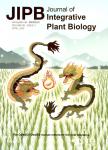Causes and Consequences of Changes in Nutrient Structure in the Jiaozhou Bay
Causes and Consequences of Changes in Nutrient Structure in the Jiaozhou Bay作者机构:InstituteofOceanographytheChineseAcademyofSciencesQingdao266071China//QingdaoMarineEngineeringProspectingInstituteStateOceanAdministrationQingdao266033China MinistryofEducationKeyLaboratoryforMarineEnvironmentalScienceXiamenUniversityXiamen361005China InstituteofOceanographytheChineseAcademyofSciencesQingdao266071China
出 版 物:《Journal of Integrative Plant Biology》 (植物学报(英文版))
年 卷 期:2005年第47卷第4期
页 面:396-410页
核心收录:
学科分类:070702[理学-海洋化学] 07[理学] 0707[理学-海洋科学]
基 金:中国科学院资助项目 国家重点基础研究发展计划(973计划)
主 题:anthropogenic factor diatoms Jiaozhou Bay nutrient structure silicon limitation stoichio metric calculations
摘 要:: Concentrations and ratios of nutrients in Jiaozhou Bay, China, have changed much in the past decades, with trends indicating an increase in nitrogen and a decrease in silicate. Statistical analysis has shown that the long-term variations of nutrients are associated with agricultural activities, precipitation, and anthropogenic factors. Stoichiometric calculations indicate that the nutrient structure has become more and more unbalanced. There has been almost no possibility for nitrogen limitation since the 1980s, the probability of P limitation has increased, and the probability of Si limitation has also increased markedly from the 1980s to the 1990s. As a consequence of changes in nutrient structure, a decrease in the abundance of net phytoplankton was evident, whereas total chlorophyll a, levels have remained roughly unchanged at around 3.55 g/L. Thus, it is likely that smaller species have taken the niche vacated by the larger species. Changes in phytoplankton size and species composition may ultimately lead to various functional and structural changes at the system level.



